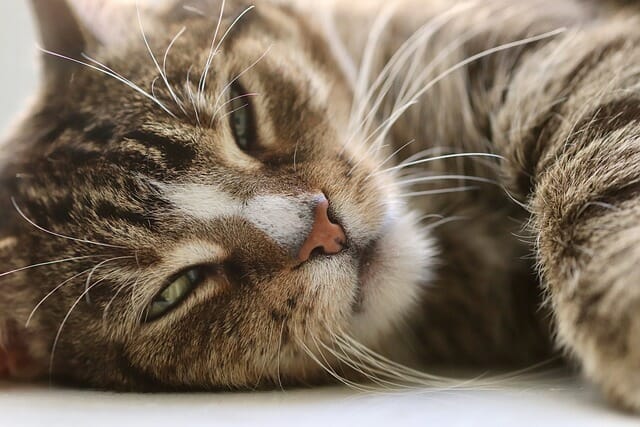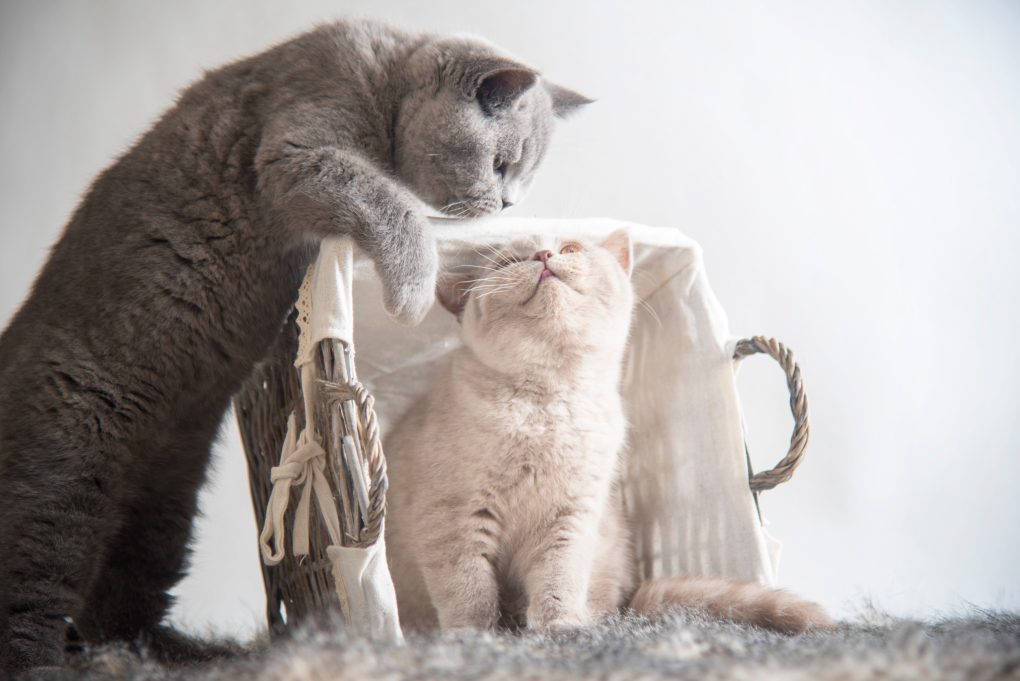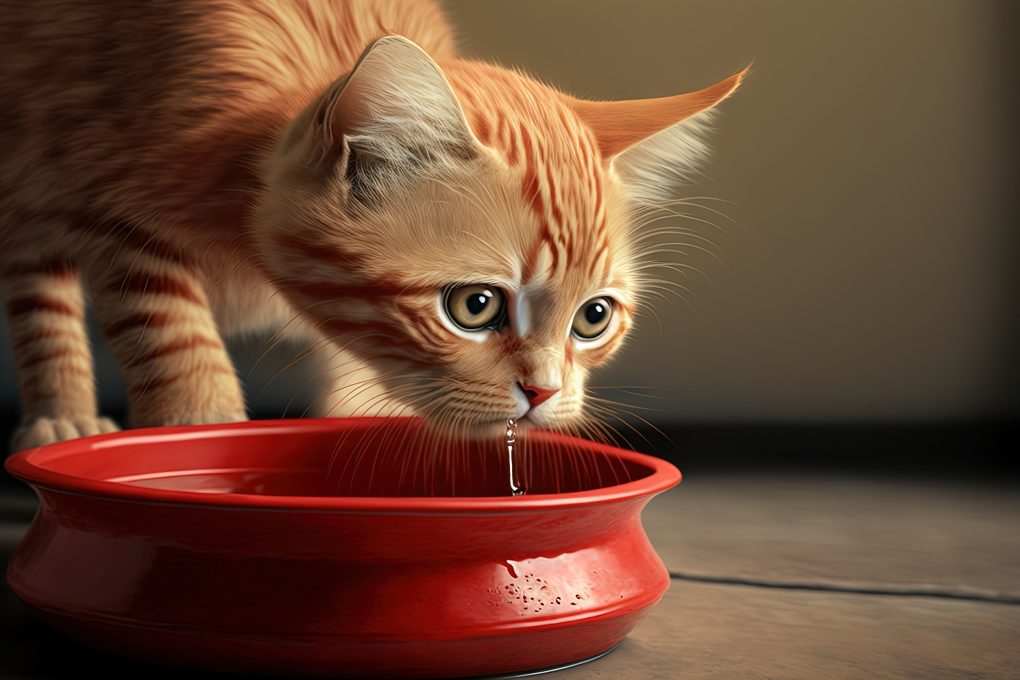Do Cat Bleed When in Heat: Sign of Heat in Cats and How to Deal With It
Unlike other animals, such as dogs, female cats do not typically experience bleeding or discharge during their heat cycle or estrus. This is because cats experience an induced ovulation, where ovulation is triggered by mating, rather than a spontaneous ovulation cycle like in humans. However, female cats in heat may exhibit various behaviors to attract a mate, such as increased vocalization, restlessness, and raised hindquarters.


Table of Contents
Signs Your Cat Is in Heat
Increased Vocalization
One of the most common signs that a female cat is in heat is increased vocalization. During their heat cycle, female cats may become more vocal than usual, meowing or making other sounds frequently. This vocalization is a way for them to signal their readiness to mate and to attract potential mates.
The vocalization can range from soft chirps to loud, persistent meowing. Some cats may even sound distressed or in pain, which can concern their owners. However, it’s important to note that while the increased vocalization can be annoying for some owners, it is a natural behavior for cats in heat.
Suppose you have a female cat exhibiting increased vocalization during its heat cycle. In that case, you can give them extra attention and playtime to help distract them and relieve some restlessness. It’s also important to consider spaying your cat if you do not intend to breed them. Spaying can prevent future episodes of heat and any associated behaviors, as well as the risk of unwanted pregnancy and other health concerns.
Restlessness
Confirming with VCA Animal Hospital, restlessness is another common sign that a female cat is in heat. During this time, they may become more active, restless, and agitated than usual. They may pace back and forth, circle objects, or become hyperactive, making settling difficult.
In addition to increased physical activity, cats in heat may also exhibit changes in their behavior. They may become more demanding of attention from their owners, seeking out petting or affection more frequently. They may also become more aggressive or territorial, especially around other cats, as they try to establish dominance and defend their territory.
To help alleviate your cat’s restlessness during heat, it’s important to provide them with plenty of mental and physical stimulation. This can include providing new toys or puzzle feeders, playing with them more frequently, and giving them a designated space to climb or play.
Urinating More Frequently
Cats in heat may also urinate more frequently than usual because their hormones are causing their bladder to contract more frequently, leading to an increased need to urinate. They may also start marking their territory more frequently by spraying urine in various locations, which can be a strong odor and difficult to clean.
To help manage your cat’s increased urination during heat, it’s important to provide them with easy access to their litter box and keep it clean and well-maintained. For example, consider using litter with good odor control to help minimize the urine smell in your home.
Raised Hindquarters
During estrus, female cats may exhibit a behavior known as “lordosis” when they raise their hindquarters and lower their front body in a posture that makes them more receptive to mating. Other behaviors, such as vocalization and tail twitching, can accompany this posture.
This behavior indicates that the cat is in heat and is ready to mate. However, it’s important to note that allowing your cat to mate during every heat cycle can lead to health risks and unwanted litters of kittens. Therefore, spaying your cat is recommended to prevent them from going into heat and reduce its risk of developing reproductive health issues such as uterine infections or cancer.
Rolling on the Ground


Rolling on the ground is a common behavior exhibited by cats during estrus. Female cats in heat may roll on the ground and expose their belly to display their availability for mating. This behavior is also a way for cats to mark their territory with their scent, released from glands on their belly and paws.
Not all cats exhibit this behavior during estrus, and rolling on the ground can also be a sign of other behaviors, such as playfulness or relaxation. If you are unsure whether your cat is in heat or exhibiting other concerning behaviors, it’s always a good idea to consult your veterinarian for advice.
Increased Affection
During estrus, some female cats may become more affectionate than usual. They may seek more attention from their owners, rub their heads or bodies against their owners, and purr more often. This increased affection is believed to be caused by hormonal changes in the cat’s body that affect its behavior and mood.
It’s important to note that increased affection is not the only sign of estrus in cats, and some cats may not exhibit this behavior at all. If you suspect your cat may be in heat, observing their behavior and looking for other signs such as increased vocalization, restlessness, and urinating more frequently is important. If you are unsure or concerned about your cat’s behavior, it’s always best to consult your veterinarian for guidance.
Things to Do When Your Cat Is in Heat
Keep Your Cat Indoors
Keeping your cat indoors is important when they are in heat. During this time, female cats will release pheromones that attract male cats, which can result in unwanted mating and pregnancy. Additionally, outdoor cats are more likely to encounter other animals or hazards that can put them at risk of injury or illness. Keeping your cat indoors during estrus can help keep them safe and reduce the risk of unwanted mating.
Keep Them Warm
Keeping your cat warm and comfortable is always a good idea, especially during its heat cycle. Cats can experience discomfort and pain during this time, and keeping them warm can help alleviate some of these symptoms. In addition, you can provide your cat with a warm and cozy space to rest, such as a comfortable bed or a heated cat bed.
Additionally, you can place a warm blanket or towel over your cat to help keep them warm. However, ensuring your cat does not overheat is important, as this can lead to other health problems. Monitor your cat’s behavior and adjust their environment to ensure they are comfortable and safe.
Provide Plenty of Water
Providing plenty of water is important when your cat is in heat. Female cats tend to urinate more frequently during estrus, so ensuring they can always access fresh, clean water is important. This can help prevent dehydration and urinary tract infections. It’s also a good idea to monitor your cat’s urination habits during this time, as any changes in frequency or appearance of urine could indicate a potential health issue.


Offer High-Quality Food
Offering high-quality food is important when your cat is in heat. During this time, your cat’s body will require extra energy and nutrients to support the hormonal changes and potential pregnancy. Feeding your cat a high-quality, balanced diet can help them get all the nutrients they need to stay healthy and strong.
It’s important to provide food appropriate for your cat’s age, weight, and activity level and to avoid overfeeding, which can lead to obesity and other health problems. Consult your veterinarian to determine the best diet for your cat during estrus.
Provide a Comfortable Space
Providing a comfortable space is important when your cat is in heat. During this time, your cat may experience discomfort or stress, so creating a safe and comfortable environment is important. For example, you can provide a cozy bed or blanket and ensure your cat has a quiet and private resting space.
Avoid disrupting your cat’s routine or stressing them out with sudden changes or loud noises. A comfortable and stress-free environment can help your cat relax and reduce any discomfort they may experience during estrus.
Entertain Them
Entertaining your cat can also be helpful when they are in heat. During this time, your cat may be more active and energetic, so providing them with toys and activities can help keep them mentally and physically stimulated. For example, play with your cat using interactive toys like wands or puzzles to keep them engaged and mentally stimulated.
Providing scratching posts or climbing trees can also give your cat an outlet for their natural behaviors and help reduce any frustration or stress they may experience during estrus. Remember to supervise your cat during playtime and avoid overstimulating them, which can lead to increased vocalization or restlessness.
Monitor Behavior
It’s important to monitor your cat’s behavior in heat. This will help you determine if they are experiencing discomfort or pain during this time and whether they require medical attention. Look for signs of distress or discomfort, such as excessive meowing, restlessness, and decreased appetite. You may also notice your cat displaying unusual behaviors like rubbing against objects or furniture or constantly licking their genital area.
If you notice any of these signs, it’s important to consult with your veterinarian to ensure your cat’s health and well-being. Additionally, monitoring your cat’s behavior can help you identify when they are ready to mate, which can be useful if you plan on breeding your cat in the future.
